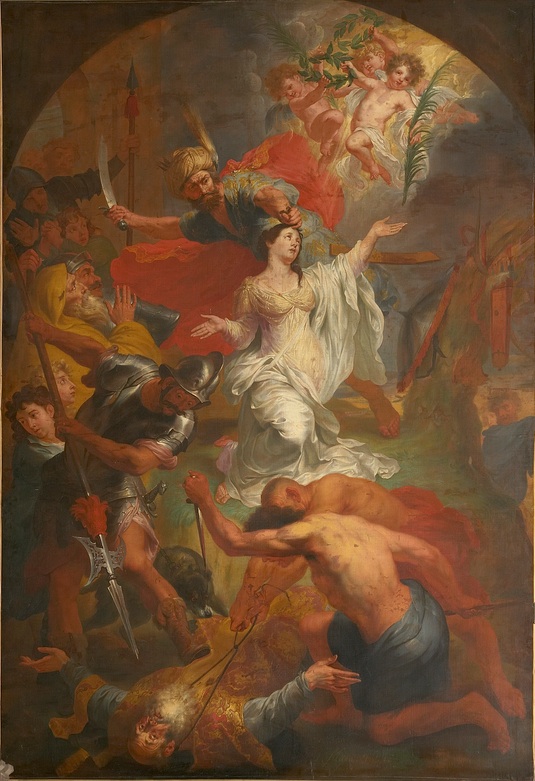Ii is a sad fact that incest in folklore is found in many countries and cultures in the world.
The Brothers Grimm story, “Allerleirauh”, also known in various forms as “Donkey Skin,” Deerskin,” or “Many Fur” is the horrific tale of a king who develops an unsuitable passion for his daughter after the king’s wife dies. The daughter runs away, disguises herself, and eventually finds a new career and a good romantic partner after a lot of hard work and heartache.
St. Dymphna is the patron saint of incest victims. She is also the patroness of the nervous, emotionally disturbed, mentally ill, and those who suffer neurological disorders – and, consequently, of psychologists, psychiatrists, and neurologists. he also protects runaways and royal girls.
According to the Christian tradition, she lived in the 7th century and was the daughter of a pagan Irish king and his Christian wife. She was murdered by her father. The story of St. Dymphna was first recorded in the thirteenth century by a canon of the Church of St. Aubert at Cambrai, commissioned by the Bishop of Cambrai, Guy I (1238–1247). The author expressly stated that his writings were based upon a longstanding oral tradition and a persuasive history of inexplicable and miraculous healings of the mentally ill.
Dymphna’s father Damon, a petty king of Oriel, was pagan, but her mother was a devout Christian. When Dymphna was around 14 years old, she consecrated herself to Christ, taking a vow of chastity. Shortly thereafter, her mother died. Damon had loved his wife deeply, and in the aftermath of her death his mental health sharply deteriorated. Eventually the king’s counsellors pressed him to remarry. Damon agreed, but only on the condition that a bride as beautiful as his deceased wife was procured for him. After searching fruitlessly, Damon began to desire his daughter, because of the strong resemblance she bore to her mother. When Dymphna learned of her father’s intentions she swore to uphold her vows, and fled his court along with her confessor Father Gerebernus, two trusted servants and the king’s fool. Together they sailed towards the continent, eventually landing in what is present-day Belgium, where they took refuge in the town of Geel.
One tradition states that once settled in Geel, St. Dymphna built a hospice for the poor and sick of the region. However, it was through the use of her wealth that her father would eventually ascertain her whereabouts, as some of the coins used enabled her father to trace them to Belgium. Damon sent his agents to pursue his daughter and her companions. When their hiding place was discovered, Damon travelled to Geel to recover his daughter. Damon ordered his soldiers to kill Father Gerebernus and tried to force Dymphna to return with him to Ireland, but she resisted. Furious, Damon drew his sword and struck off his daughter’s head. She was said to have been 15 years old when she died.
In 1349 a church honoring Saint Dymphna was built in Geel. By 1480, so many pilgrims were coming from all over Europe, seeking treatment for the mentally ill, that the church housing for them was expanded. Soon the sanctuary for the mad was again full to overflowing, and the townspeople began taking them into their own homes. Thus began a tradition for the ongoing care of the mentally ill that has endured for over 700 years and is still studied and envied today. Patients were, and still are, taken into the inhabitants of Geel’s homes. Never called patients, they are called boarders, and are treated as ordinary and useful members of the town. They are treated as members of the host family. They work, most often in menial labor, and in return, they become part of the community. Some stay a few months, some decades, some for their entire lives. At its peak in the 1930s, over 4,000 ‘boarders’ were housed with the town’s inhabitants.

